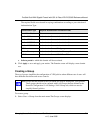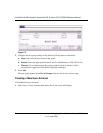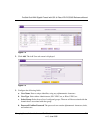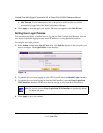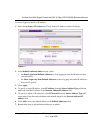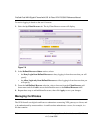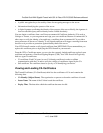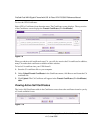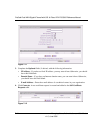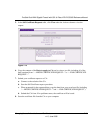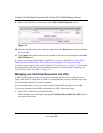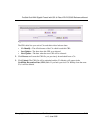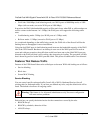
ProSafe Dual WAN Gigabit Firewall with SSL & IPsec VPN FVS336G Reference Manual
Managing Users, Authentication, and Certificates 7-11
v1.2, June 2008
For each self certificate, the following data is listed:
• Name. The name you used to identify this certificate.
• Subject Name. This is the name that other organizations will see as the holder (owner) of this
certificate. This should be your registered business name or official company name. Generally,
all of your certificates should have the same value in the Subject field.
• Serial Number. This is a serial number maintained by the CA. It is used to identify the
certificate with in the CA.
• Issuer Name. The name of the CA that issued the certificate.
• Expiry Time. The date on which the certificate expires. You should renew the certificate
before it expires.
Obtaining a Self Certificate from a Certificate Authority
To use a self certificate, you must first request the certificate from the CA, then download and
activate the certificate on your system. To request a self certificate from a CA, you must generate a
Certificate Signing Request (CSR) for your VPN firewall. The CSR is a file containing
information about your company and about the device that will hold the certificate. Refer to the
CA for guidelines on the information you include in your CSR.
To generate a new Certificate Signing Request (CSR) file:
1. Locate the Generate Self Certificate Request section of the Certificates screen.
2. Configure the following fields:
• Name – Enter a descriptive name that will identify this certificate.
• Subject – This is the name which other organizations will see as the holder (owner) of the
certificate. Since this name will be seen by other organizations, you should use your
registered business name or official company name. (Using the same name, or a derivation
of the name, in the Title field would be useful.)
• From the pull-down menus, choose the following values:
– Hash Algorithm: MD5 or SHA2.
– Signature Algorithm: RSA.
– Signature Key Length: 512, 1024, 2048. (Larger key sizes may improve security, but
may also decrease performance.)



